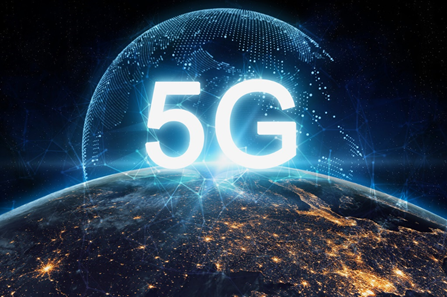5G Requirement: High Data Throughput

Mobile Broadband addresses the human-centric use cases for access to multi-media content, services and data.
The demand for mobile broadband will continue to increase, leading to enhanced Mobile Broadband.
The enhanced Mobile Broadband usage scenario will come with new application areas and requirements in addition to existing Mobile Broadband applications for improved performance and an increasingly seamless user experience. This usage scenario covers a range of cases, including wide-area coverage and hotspot, which have different requirements.

For the hotspot case, i.e. for an area with high user density, very high traffic capacity is needed, while the requirement for mobility is low and user data rate is higher than that of wide area coverage.

For the wide area coverage case, seamless coverage and medium to high mobility are desired, with much improved user data rate compared to existing data rates. However the data rate requirement may be relaxed compared to hotspot.
The peak data rate of IMT-2020, for enhanced Mobile Broadband is expected to reach 10 Gbit/s.
However under certain conditions and scenarios IMT-2020 would support up to 20 Gbit/s peak data rate,
IMT-2020 would support different user experienced data rates covering a variety of environments for enhanced Mobile Broadband.

For wide area coverage cases, e.g. in urban and sub-urban areas, a user experienced data rate of 100 Mbit/s is expected to be enabled.
In hotspot cases, the user experienced data rate is expected to reach higher values (e.g. 1 Gbit/s indoor).
The minimum requirements for peak data rate are as follows:
– Downlink peak data rate is 20 Gbit/s.
– Uplink peak data rate is 10 Gbit/s.
Peak data rate is the maximum achievable data rate under ideal conditions (in bit/s),
which is the received data bits assuming error-free conditions assignable to a single mobile station, when all assignable radio resources for the corresponding link direction are utilized (i.e. excluding radio resources that are used for physical layer synchronization, reference signals or pilots, guard bands and guard times).
Peak data rate is defined for a single mobile station. In a single band, it is related to the peak spectral efficiency in that band.

User experienced data rate is the 5% point of the cumulative distribution function (CDF) of the user throughput.
User throughput (during active time) is defined as the number of correctly received bits, i.e. the number of bits contained in the service data units (SDUs) delivered to Layer 3, over a certain period of time.
The target values for the user experienced data rate are as follows in the Dense Urban environment:
– Downlink user experienced data rate is 100 Mbit/s.
– Uplink user experienced data rate is 50 Mbit/s.

Area traffic capacity is the total traffic throughput served per geographic area (in Mbit/s/m2).
The target value for Area traffic capacity in downlink is 10 Mbit/s/m2 in the Indoor Hotspot – eMBB

Connection density is the total number of devices fulfilling a specific quality of service per unit area (per Km2).

The minimum requirement for connection density is 1000000 devices per Km2.
YouTube Version:





